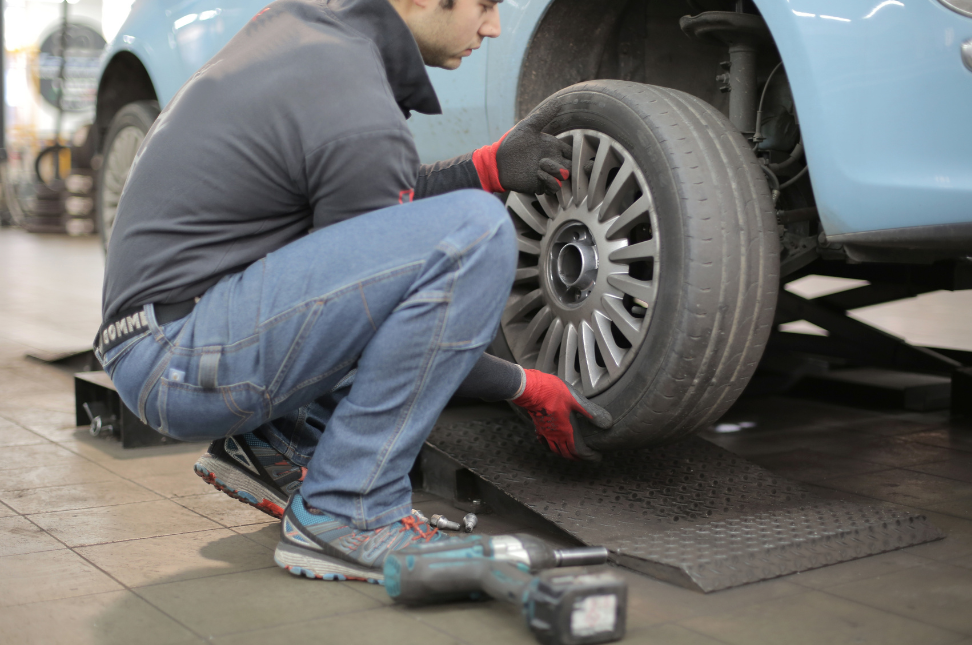Owning a car comes with its fair share of challenges, but being able to address common issues on your own can save you time, money, and frustration. In this detailed DIY guide, we’ll delve into various common car problems and provide comprehensive solutions to empower drivers in the US, UK, and Canada to tackle them confidently.
- Tackling Flat Tires:
Flat tires are perhaps the most ubiquitous car problem drivers encounter. Whether it’s due to a nail puncture, slow leak, or worn tread, knowing how to change a tire is essential. Start by locating your vehicle’s spare tire, jack, and lug wrench. Position the jack securely under the vehicle frame, loosen the lug nuts, lift the car, remove the flat tire, mount the spare, tighten the lug nuts, and lower the vehicle. Remember to adhere to safety precautions and consult your car manual if needed.
- Reviving Dead Batteries:
A dead battery can leave you stranded, especially during cold weather. Knowing how to jump-start your car can be a lifesaver. First, identify a donor vehicle with a functional battery and park it close to yours. Connect the positive (+) jumper cable to the positive terminal of the dead battery, then connect the other end to the donor vehicle’s positive terminal. Repeat the process with the negative (-) cable, ensuring a secure connection. Start the donor vehicle, let it run for a few minutes, then attempt to start your car. Once running, drive for at least 20 minutes to recharge the battery fully.
- Cooling Down Overheating Engines:
An overheating engine is a serious issue that demands immediate attention. If your temperature gauge starts climbing into the red zone or you notice steam escaping from under the hood, pull over safely and turn off the engine. Allow it to cool for at least 30 minutes before attempting to open the hood to avoid burns. Once cool, check the coolant level and top it off if necessary. Inspect hoses and the radiator for leaks, and if you’re unable to identify the problem, seek professional assistance to prevent further damage.
- Deciphering Check Engine Lights:
The check engine light can be a source of anxiety for drivers, but it doesn’t always indicate a catastrophic problem. Invest in an OBD-II scanner to read the error code and diagnose the issue. Common culprits include loose gas caps, faulty oxygen sensors, or minor sensor malfunctions. Addressing these issues promptly can prevent more significant problems down the line. If you’re unsure about the severity of the problem, consult a mechanic for further guidance.
- Quieting Squeaky Brakes:
Squeaky brakes are not only annoying but also potentially indicative of a need for maintenance. Start by inspecting the brake pads and rotors for wear. If the pads are thin or the rotors are worn, it’s time for replacement. Be sure to follow manufacturer recommendations for brake maintenance to ensure optimal performance and safety. Additionally, lubricating brake components can help mitigate noise and improve braking efficiency.
Conclusion:
Dealing with common car problems can be daunting, but armed with the right knowledge and tools, you can address them effectively. By mastering these DIY solutions, you can tackle issues like flat tires, dead batteries, overheating engines, check engine lights, and squeaky brakes with confidence. Remember to prioritize safety, regular maintenance, and consult professional help when needed. With this comprehensive DIY guide, you can navigate common car problems like a seasoned pro and enjoy peace of mind on the road. How to Deal with Common Car Problems: A DIY Guide equips you with the skills to handle automotive challenges efficiently and effectively.




